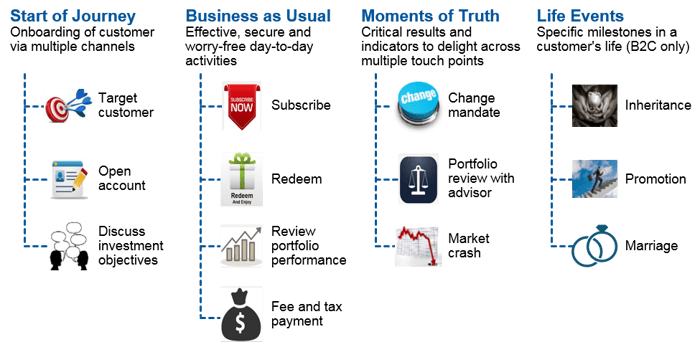Contextualized Customer Communications: Customer’s Perspective
We’ve been going over Gartner’s recent report, Three Steps to Enrich the Customer Experience with Contextualized Communications, for the past couple of weeks. We have been digging into the ideas they covered a bit more deeply in a series of posts here on our blog. You can read Challenge 1: A Fragmented Approach, Challenge 2: Static Output, Unidirectional Broadcast Model, and Challenge 3: Not Knowing Your Customers first if you like. In this post, we dive into the first solution Gartner recommends.
Solution 1: Shifting Customer Communications from Tactical, “Push” Perspective to Strategic Focus on Customer’s Perspective Inward
Here’s how Gartner explains their first recommendation for improving customer communications management (CCM) and using CCM with web content management (WCM) to enrich customer experience (CX):
“Shift your communications initiative from a tactical, ‘push’ perspective to a strategic focus on the customer's perspective inward. Emphasize consistent and relevant customer communications across all channels and the customer's life time journey. Identify the various new ways in which CCM and WCM solutions can be deployed for different parts of this journey.”
As we’ve said before, CCM has to move beyond a focus on simply cost reduction or print suppression and take its place as an important part of the customer journey at multiple touchpoints (see illustration, below, from the Gartner report).

The definition of a “customer” now encompasses those who interact with the brand before or outside of making a purchase and remain brand advocates (or critics) long after they stop using products and services. Consequently, you have to start thinking in terms of maximizing customer lifetime value rather than focusing tightly on individual interactions. It’s the whole customer experience that factors into customer loyalty, retention and advocacy now.
To this end, the Gartner analysts recommend that IT application leaders do the following:
- Redefine the idea of the “customer”
- Model the different phases of the overall customer relationship, or life cycle, with the brand
- Identify the different systems needed to assess the customer's context at every phase. (Contextualization confers the ability to use historical information, as well as up-to-the-minute information to improve the nature and quality of interactions.)
- Integrate or combine WCM and CCM technologies to ensure rich, engaging and deep communications during each phase
- Consider the types of content and communication that need to be generated, delivered and, more importantly, personalized, in the different phases of the customer journey

It’s important to note that CCM plays a huge part in customer service, upselling and cross-selling. It’s therefore highly relevant well beyond operations, affecting call centers, customer web portals, marketing and sales.
Further recommendations from Gartner for more contextualized customer communications include:
- Understanding and modeling the customer life cycle and the different journeys of customers
- Mapping the full customer journey to visualize interactions and identify communication touchpoints and types of communication required
- Using WCM and CCM tools together to determine personalization and targeting based on recipients' contexts and behavior
Next: Move from Single-Channel to Cross-Channel Communications
In a future post, we’ll take a look at the second recommendation presented in the Gartner report, which is about moving from single-channel to multichannel distribution, and from multichannel to cross-channel (omni-channel) communication. Be sure to subscribe to our blog to be notified when new articles in this series are posted.







